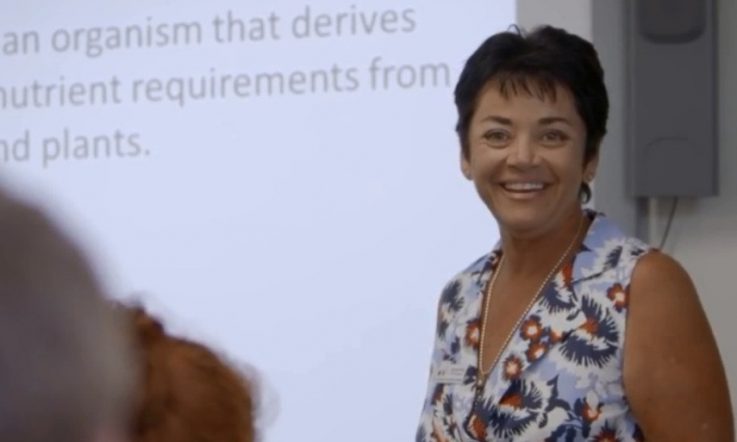Hello and thank you for downloading this podcast from Teacher magazine – I'm Jo Earp.
Early career teacher attrition is seen as an issue of concern around the world. Here, scholarly articles and media reports regularly state that between 30 and 50 per cent of Australian teachers leave the profession within the first five years. But, where do those figures come from and how accurate are they? A study published in the Australian Journal of Education, suggests there is no robust Australian evidence and data. Author Dr Paul Weldon joins The Research Files to discuss his findings.
Jo Earp: First of all, can you just go through exactly what you were researching and why?
Paul Weldon: I was researching early career teacher attrition in Australia – that is, teachers who have completed their study, so they've formally become recognised teachers, and they go and teach in the workforce here in Australia, and they leave [within] five years. That's kind of the general definition, so that was the area that I was researching. Specifically, the numbers, the figure – how many teachers leave in those first five years.
JE: Was it that you'd seen the same figures quoted? Was there some kind of feeling, an inkling; it's difficult to put your finger on the stats actually – is that what prompted you?
PW: That's right. I'd done a fair amount of work in teacher supply and demand. I'd been involved with the Staff in Australia's Schools Survey in 2010 and again in 2013, I'd done a supply and demand report for the Victorian State Government. So, I was already across what kind of data were available in the supply and demand area and I wasn't aware of any figures that were publicly available – certainly not national figures.
And, yes, I kept seeing reports in the media. At one stage after I'd published a report on supply and demand that mostly came out of the Staff in Australia's Schools survey, a report did come out on the media that said I think up to 50 per cent of early careers teachers were leaving in the first five years, and attributing it to me. So, that kind of ended up with myself getting a few emails from interested parties (governments and what have you) about where that data had come from, which made me realise that others were also interested and aware of the reporting that was going on.
So, I thought, well, where are these numbers coming from? And, why do they keep appearing? The numbers seemed a little bit strange to me – and I don't mean in the sense of that I didn't believe that that might be the case, I'm willing to admit that it may well be that there are a lot of early career teachers leaving. My problem was, the way the data were presented and my knowledge of the supply and demand data that was available in Australia, suggested that those figures didn't really exist. I wanted to find out where they were coming from …
JE: What exactly did you do? How did you go about it?
PW: I must say that writing the methodology section of the [AJE] paper was a little more difficult because the way the whole research started meant that I hadn't done anything initially in any formal way. Usually if you're doing something along those lines you'd choose some databases and you would choose specific keywords and you would search those databases. I did a little bit of that, but one of the problems that I faced was that when you do that you're basically looking at particularly types of literature – largely journal articles – and a lot of teacher supply and demand data come from what we call ‘grey literature', which is literature that isn't published by recognised publishing houses. They're not formally published by a publishing house, they have no ISBN, they have no catalogue number and often they disappear off websites when websites change and it's hard to find them ...
It was very much a desktop research program this one, that as I say my primary purpose was: What numbers are out there? Where are they coming from? What evidence actually is there in Australia for the numbers that are being cited? (largely in the media but also in journal articles and other education literature coming out in Australia and, to an extent overseas).
JE: What did you find then?
PW: Not a lot, to be honest! I followed a number of sources back as far as I could and what I found, in terms of journal articles, on the whole, the information about teacher attrition, the proportion of teachers leaving, wasn't the focus of the papers – their focus was why, why are teachers leaving? So in most cases what academics had done was gone and talked to teachers or done surveys of teachers, so their focus was: Why is this happening? What's the school environment that's perhaps leading to this? What are the issues that early career teachers face?
I found that there were citations going back some time, but when I actually looked at the figures and went back and back to the various reports that had been produced over the years, I basically found that there were no figures, nationally at least. The figures that existed had appeared in a couple of large reviews that governments had done, or had done nationally for organisations like the OECD. And the figures that were cited in those reports: in the case of the 25 per cent, that was an anecdotal figure from the New South Wales Government; in the case of 30 per cent, that was a figure from the Western Australia State Government; the other figures, generally, were lower, there was only one figure that was higher – 40 to 50 per cent, and that had come from one particular paper. As far as I could tell those figures came out of an international review but were not actually Australian figures. So, there was an assumption being made that because the attrition of early career teachers was high in most other countries that were a part of this study, therefore it must also be the case in Australia. Which is not an unreasonable assumption to make, but there's no hard evidence that it is actually 40 to 50 per cent.
So, that was what I discovered as far as the figures went. And that really didn't surprise me, because I was fairly aware of, having worked in a number of supply and demand reports, that in Australia we simply don't do national figures very well – partly because obviously we have eight states and territories, the states and territories are responsible for education so most of the data comes at a state level, not at a national level. Especially with attrition that's a problem, because just the fact that a teacher has left teaching in one school, or in one state, doesn't necessarily mean they've left teaching … but, beyond that of course we have multiple sectors.
… One of the other issues for me was the definition of an early career teacher. At what point do you start collecting data on teachers leaving? In the Australian system, potentially there are three points that you could use.
There's the point at which they graduate, at that point they are qualified to teach. We know how many of those we have and it would be useful to know how many of those choose to teach, but could you consider them early career teachers if they actually qualify but don't teach? We already know that five per cent of teachers who qualify are international students, many of those will go home so they're not going to teach here. We also know that a proportion of teachers don't teach in Australia, they go to the UK or Canada, both of whom regularly recruit from Australia. So, it doesn't mean they're not teaching necessarily, but they're not teaching in Australia. So, that's one point at which you certainly need to find out how many teachers are leaving.
The next point is that, in our system, in order to teach you have to be accredited with a teaching body – in Victoria that would be the Victorian Institute of Teachers. You have to be a provisionally registered teacher, you have to register with them. So you could say the people who intend to teach are the ones who register, so let's start from them. In which case, your definition of early careers teachers leaving in the first five years would be from the point of registration.
An alternative, the third one, is teachers who actually start work. This is again where one of the issues was raised for me, in that when you look at a lot of the research and a lot of the media commentary, when they say ‘up to half of all teachers leave in the first five years', they're always talking about ‘and it's because they're stressed, it's because they don't get enough support, they're not treated well …' all of which is absolutely an issue that needs to be considered, but it's not the whole story.
The other issue which relates to that is when you see the figure what you generally see is a single figure, but in teacher supply and demand usually you would expect to see at least two figures. In this case the two figures would be primary schools and secondary schools. Primary teachers are a very different workforce to secondary teachers. Primary teachers are generalists, they work in primary schools. Yes there are P-12 schools but, on the whole, primary schools are quite different entities to secondary schools. And at secondary level you can split your teacher workforce into subject areas – so, your teachers of maths or of sciences are actually quite different from your teachers of history or English. For example, there is a lot more women teaching English and history, proportionately, than there are men, and it's vice-versa for science and maths. Plus, science and maths people who are interested in those areas potentially have very different opportunities in the workforce outside teaching to, say, teachers of physical education or drama. So, the numbers of teachers who are leaving, and when they leave, in both of those areas – whether it's primary or secondary, and within subject areas – is likely to be very different. So, to say ‘up to half of all teachers' ignores the fact that that number is going to be different.
… As soon as you split into primary and secondary you start seeing different issues, and I would say that that would be the same in teacher attrition. For example, if you take the issue of teachers who have graduated, who have registered with the local teacher institution and are therefore eligible to teach, one of the issues at primary level is that there are way too many teachers coming through than there are places. One of the issues for teachers who choose to leave in the first five years has nothing to do with lack of support at schools, it's far more to do with the fact that they can't get work. They might not want to move to areas that have work, they might find that they're running from contract to contract, it may be that a contract is only for nine months, they might be supply teaching and after five years still haven't found a permanent position, want to do other things in their lives, mortgage or other things that they can't do while they don't have the security of a long-term job, or maybe they can only get part-time work. Part-time work is becoming more prevalent in the teacher career structure as well.
So, there are a lot of issues, even before you get into the schools, that may well be causing a number of teachers to choose to drop out of teaching and find other work. … For me, it wasn't just the figures and the fact that I was fairly sure that they didn't exist (and they don't, currently) but it was the lack of nuance.
JE: What would you recommend for the future? Is there a better way that we can go about capturing these attrition rates?
PW: There's a lot of evidence that attrition is a problem, particularly internationally, and we know from various reviews that there are issues that the systems need to consider. I think if we were able to better measure attrition, better define attrition of early career teachers, and get some sense of where in the pipeline they are leaving and why that would enable us to get a much better sense of where perhaps policies might be directed.
One of the issues we have, I suppose, is that we've had many reviews over the years of teacher education and the teacher workforce, and many recommendations have come out of those, particularly around the support for early career teachers, and a number of things in different states have been put into place, particularly over the last five to 10 years. But we have no baseline data on attrition to judge whether any of those have been successful. Clearly there has been some research, but a lot of it is anecdotal, or on a small group of teachers, so we don't have any reasonable or robust evidence to say that some of these policies are actually making a difference.
[… What I've suggested is that] we consider a definition, and I've already suggested points at which you may want to start collecting data, and I did include in the paper a table that demonstrated the different supply points in the teacher workforce. There may be other ways of looking at it, but I felt that by providing that there was a starting point for discussion. What I also did was suggest a typology of attrition, which is to say a means of finding out why. The idea being that, at some stage when teachers move or leave we need to collect some information around why so that we can actually find out what's going on.
I suggested a number of different effects. That teachers are unable to obtain regular or ongoing or full-time employment (that's a demand issue), they just can't get the work they're trying to get so they leave for that reason. A personal effect – some teachers will be leaving for personal or family reasons, as a carer for illness, as a carer for their children. A compatibility effect – some teachers, even though they've gone through all their training and have spent time in classrooms, discover initially that they don't feel very compatible with the teaching that they get to do, so that's a personal choice and not necessarily because of the lack of support of a school, if that's the case. Then there's the choice effect – which is to say that teachers may choose to leave for reasons other than the effect of the school, they might be attracted to a different career and they might want to change their career.
Then of course there is the environment effect, which we do know about – the lack of support, a school culture which may require early career teachers to teach out of field (and we know that more early career teachers teach out of field than any other group), student behaviour, the workload, administration workload, all of those kinds of things are clearly issues. Then of course there's also the performance effect, which I imagine would be very low, where teachers are actually sacked for some kind of illegal behaviour or because they're not doing the job that they're supposed to be doing.
So, there are a number of different issues, which I think need to be taken into consideration, so you're not just coming up with one figure.
JE: That's great. There's plenty to discuss there and debate, and I think this paper opens that debate. It's been fascinating speaking to you today. Dr Paul Weldon, thank you for joining The Research Files.
PW: Thank you very much.
That's all for this episode, to keep listening or to download all of our podcasts for free, whether it's more on The Research Files or our series on Behaviour Management, School Improvement, Teaching Methods, Global Education or Action Research, just visit acer.ac/teacheritunes or soundcloud.com/teacher-ACER. The full transcript of this podcast and further information about the study on early career teacher attrition discussed in this episode is at teachermagazine.com.au. That's where you'll also find the latest articles, videos and infographics for free.
The full paper detailing the findings of the study – Early career teacher attrition in Australia: evidence, definition, classification and measurement – is free to access in the Australian Journal of Education for one month.



